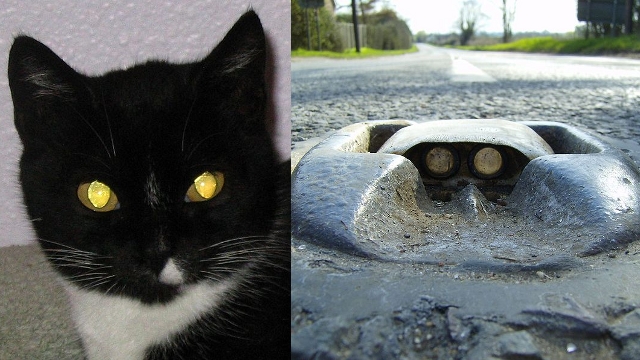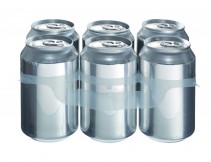
Nature’s inventiveness often inspires human innovation as in the well-known case of hook-and-loop fasteners: Swiss engineer George de Mestrel turned a hiking annoyance (burrs) into a handy tool (Velcro). But did you know that safety road markers were inspired by a cat’s eyes reflecting headlights? For some reason, I find that much creepier than the Velcro story — especially the early advertisement depicting a row of live cats sitting helpfully along the median.
“Eyeshine” may be most familiar as a feline phenomenon, but it occurs in a tremendous variety of animals, from moths to whales. It’s caused by the tapetum lucidum, a reflective layer behind the photosensitive part of the eye which bounces photons back, giving them a second chance to be seen. This ability is a major advantage at night and in the deep sea and has evolved many times in many different forms.
Crocodiles and opossums use small particles to achieve diffuse reflection; deep-sea fish have layered crystals that reflect like a true mirror. Horses and whales reflect with an organized mesh of fibers; cats, dogs, seals and sharks all use crystal-containing cells. Sharks are uniquely able to cover theirs up if the environment has too much light (Sharks: 1, Cats: 0).

Eyeshine is just one of many rabbit holes of curiosity opened by a visit to “Hidden Heroes: The Genius of Everyday Things,” an exhibit currently on display at the San Jose Museum of Art which features both Velcro and safety reflectors.
“Hidden Heroes” was conceived by Hi-Cone, a division of the multinational company ITW that produces those ubiquitous plastic rings for carrying six-packs. Their slogan is the not un-creepy, “We are all around.” Concerned by the public’s failure “to consciously perceive the invention and its ingenuity,” Hi-Cone convinced Germany’s Vitra Design Museum to create an entire exhibition of commonplace objects (including six-pack rings, of course). The online exhibit contains 44 heroes, 35 of which are touring internationally in meatspace. San Jose is only one of two host locations in the US; the other was the MIT museum.
